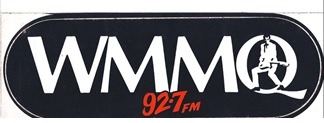Last year marked the 30th anniversary of our first FM Classic Rock sign-on and the format’s breakout station, WMMQ/Lansing. I’m pleased to say the station continues to enjoy success, playing a steady diet of Led Zeppelin, Pink Floyd, and Aerosmith songs, now owned by Townsquare Media.
I’m often asked, what explains the success of the Classic Rock story, not just in 1985, but over the past three decades.
Was it the massive size of the Baby Boomer audience?
Was it that everyone grew up with the same radio stations, creating a shared experience for the music?
Was it the birth of the compact disc, just in time for the format’s rise?
Was it that most of what was then Rock (or AOR) radio was consumed by current hits, led by the MTV revolution?
Was it the birth of Classic Coke, the recovery strategy that helped turn around the New Coke debacle?
All those things most definitely played a role in the Classic Rock success story. But I’d like to think that it is the quality of the music and the scores of artists who made it that explain why there are more Classic Rock stations than Rock, Alternative, and Triple A stations combined.
Pop culturists may be getting a better sense of that truth as we began to experience the inevitable passings of Classic Rock icons last month. From David Bowie to Glenn Frey to Paul Kantner, their deaths are reminders of the lasting quality of their talents, their incredible craft, and their spirit that reflected the times.
Back at the University of Michigan in the late ’60s-early ’70s, Young was a huge favorite of many of the people I hung out with. We’re all products of the music that was playing in our dormitories, fraternity and sorority houses, or off-campus apartments. For me, it was “Layla and Other Assorted Love Songs,” “Disraeli Gears,” “Abbey Road,” “Days Of Future Passed,” and anything by Young, including “After The Gold Rush” and later “Harvest.”
And to illustrate just how powerful this music was, and still is, here’s a video we dug up of Neil Young singing one of his classics, “Old Man.”
Email recipients can watch the video here.
I’m sure that Classic Rock fans inside the radio industry and out have their own precious favorites. And that’s a big reason why the format has endured. We created a tribute site to the radio format you can access here.
So take the time to savor this acoustic masterpiece by Neil Young, and enjoy your President’s Day Monday, whether you’re at your desk or hanging out with the family.
- Media In 2025: Believe It Or Not! - January 15, 2025
- Every Company Is A Tech Company - January 14, 2025
- The Changing Face Of Social Media (OR WTZ?!) - January 13, 2025




Congratulations on your work Fred. The music is very popular with young men and women in their teens because they choose classic rock artists to emulate while learning to play music on their own. I hear from many 17 year old guys who play Clapton, Zep and other rock tunes in their own bands. It’s really very cool.
Thanks for the kind note, Jack. It’s great to see this music being appreciated by the children (and grandchildren!) of Boomers.
Is it possible that most of the success is because its REALLY GOOD music? I don’t think there’s much of the party stuff that may have been associated with classic rock left, so I doubt its a lifestyle thing. There are probably some 90s grunge titles that test really well, but I doubt that 40 year later college kids will be familiar with them, much less respecting and even enjoying them.
That’s my theory – great music, pure and simple.
In a nutshell, yes. 🙂